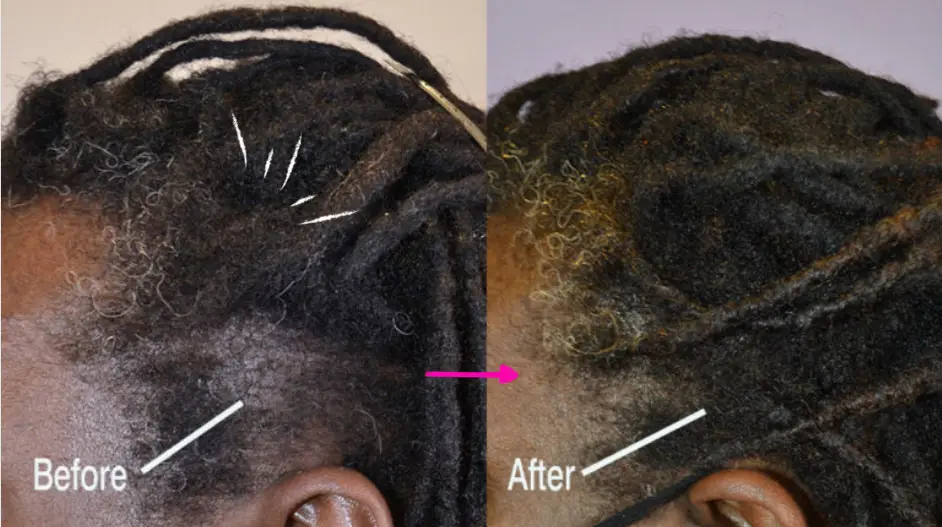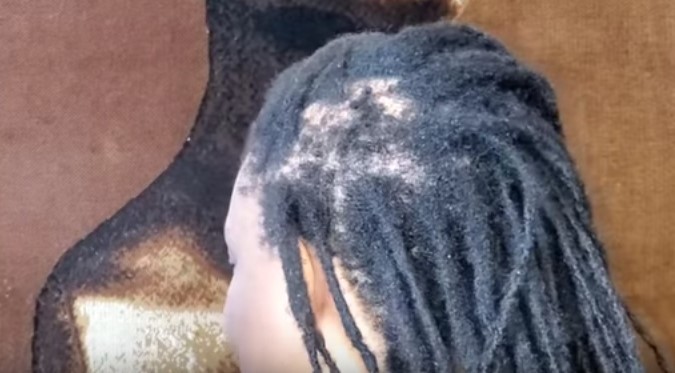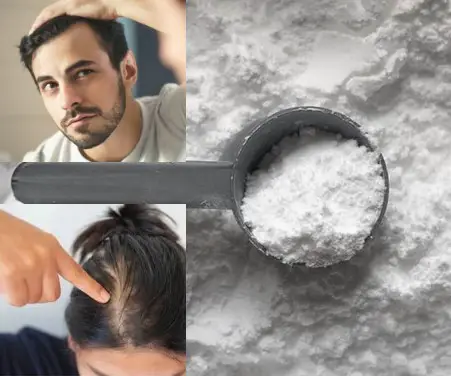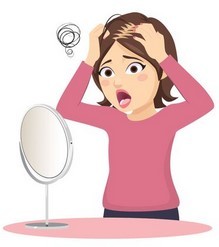Hair extensions are a popular styling choice among many looking to add volume, length, or texture to their hair. However, there is a downside to using hair extensions: they can cause traction alopecia, a type of hair loss caused by excessive tension on the scalp. Fortunately, with the right precautions, you can avoid the risk of traction alopecia from hair extensions and still enjoy the benefits of wearing them. In this blog post, we’ll discuss how hair extensions cause alopecia, the signs, and symptoms to look out for, and how you can prevent it.
Hair extensions have been around for a very long time. They are used by women of all ethnicities to broaden the range of styles they can use for their hair. They add volume, color, and texture to hair, and they change the wearer’s appearance dramatically.
The earliest hair extensions were used by the ancient Egyptians, where men and women wore hair extension wigs to ward off lice. Back then, it was not uncommon for men to shave their heads and wear a wig over their bald scalps.
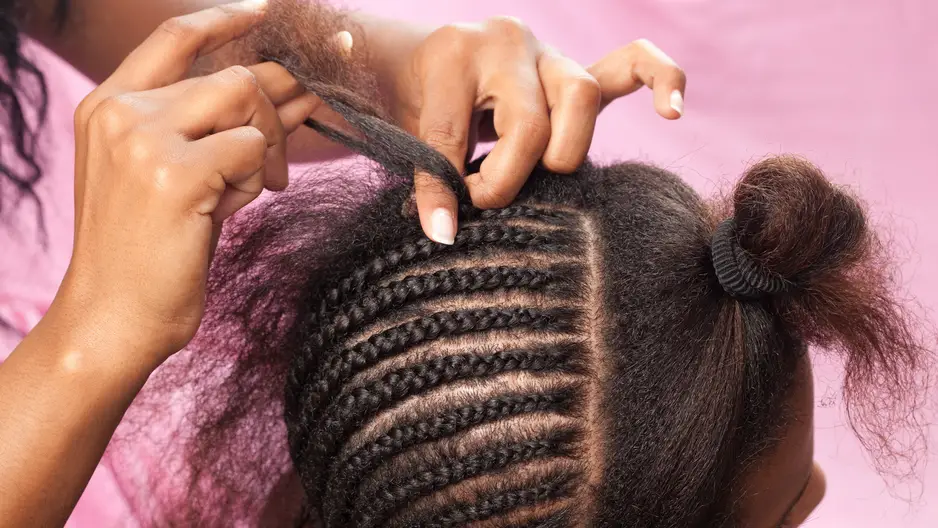
Hair extensions have come into and fallen out of fashion many times. In the 1800s, women were encouraged to keep their hair natural, so extensions fell by the wayside. Meanwhile, hair extensions crept back into fashion during the 20th century, and women used them to recreate the pompadour, a French hairstyle featuring hair worn high on top of the head and decorated with jewels, beads, and flowers.
During this time, the hair extensions were usually attached using beeswax. The hair itself was mostly real hair cut from people with long hair, who would often grow their hair long specifically to sell it. Because of its high cost, only the rich could afford these hair extensions.
Nowadays the cost is far lower, and extensions are available in both real hair, synthetic and mixed varieties. The methods of production have evolved as technology progressed, and so have the methods of attachment. Gone are the days of beeswax. Now modern attachment methods include: micro braiding; strand-by-strand “fusion” methods (hot and cold); sewn-in weaves; bonding weaves; Brazilian knots; clip-ins; and drawstring ponytails. The range of options is dizzying!
How can hair extensions cause hair loss by traction alopecia?
It is not all good news, however. The increased popularity and affordability of hair extensions has also meant an increased risk of hair loss by traction alopecia. This is the form of hair loss that is caused by applying pressure to the hair follicle.
Pulling hair too tightly or adding weight to the hair causes increased pressure on the follicle. Whatever the attachment method used with hair extensions, they all put additional weight on the follicles of your real hair. With constant use of extensions, hair follicles become damaged.
Under normal circumstances, part of the growth cycle for a hair follicle is the telogen (“resting”) phase. The hair will enter this phase once at the end of every growth cycle, and if the follicle has been damaged (such as through prolonged use of hair extensions), it will not leave the rest phase. The hair follicle will become dormant.
When more and more follicles are rendered dormant, patches of hair loss become noticeable. In traction alopecia caused by excessive use of hair extensions, hair loss is found primarily around the hairline, where the roots are often weaker than those on the rest of the head and on the crown; where the hair is most often pulled tight into a ponytail, and the drawstring ponytail attachment method for hair extensions is commonly applied.
1. Sew-in weave
The most notorious attachment method for causing traction alopecia through hair extensions is the sew-in weave. This method features hair tightly braided into “tracks” along the scalp, with the extensions sewn into the braids. The tracks must be braided very tightly if they are to withstand the extra weight of the hair extensions, which puts a lot of pressure on the follicles. As new hair grows in, the extra growth is pulled on by the weight of the hair extension, further damaging the follicle and eventually resulting in traction alopecia.
2. Bonding glue
Excess weight on the follicle is not the only problem. Bonded hair extensions, which use a bonding glue that is, in essence, the modern beeswax, to attach wefts to the scalp, require a special glue-removing substance to remove. Once the bonding glue is softened or broken down using the glue remover, the hair extensions can be simply pulled out.
The problem is that the glue is very strong, and the remover is not always applied effectively to every single point that the glue is attached to the wearer’s head. As a result, natural hair is pulled out at the roots when bonded hair extensions are removed. This damages the hair follicles and can lead to traction alopecia.
3. Strand-by-strand
Other attachment methods cause traction alopecia in ways similar to the two methods discussed above. The strand-by-strand method adds excess weight to the follicle and so causes alopecia in a similar way to the sew-in weave.
Brazilian knots, on the other hand, use a combination of threading and gluing. Because Brazilian knots are attached as close to the scalp as possible, they put a large amount of pressure on the follicle both due to the extensions themselves and through extra weight added when the hair grows out naturally.
Traction alopecia occurs at different rates for different people, but the worst damage occurs when extensions are used continuously. Use should, therefore, be curtailed, with extensions worn rarely and always followed by a few months “recovery time” to let your follicles repair themselves.
4. Chemical relaxants and hair colouring
Chemical relaxants for your hair, and also hair colouring, weakens the roots and makes the hair even more likely to fall out under the strain of hair extensions. You should, therefore, avoid colouring your hair or using hair relaxants if you intend to wear hair extensions.
Related post; Hair extensions for men balding
Traction alopecia treatment
It is not all bad news, though. Traction alopecia can be treated, even after years of hair abuse, but it requires patience and dedication. Treatment is only possible by stimulating follicles, making them grow new hair.
This requires a healthy scalp, so traction alopecia hair transplant surgery should only be used as a last resort. Transplanting hair into an unhealthy scalp only results in uptake failure as the damaged scalp will not be able to nourish the new hairs and sustain growth.
Dealing with traction alopecia is easy once it is diagnosed correctly. It may be a case of wearing the hair more naturally if it is discovered early. The bald patches or thin hair may not even be that noticeable, and it may be possible to cover them with effective grooming. A more advanced case, usually caused by the hair being severely mistreated, may leave bald patches that are highly noticeable and will obviously be more challenging to handle. Sometimes, the best answer is to shave off the remaining hair and use a cosmetic wig and hair extensions for alopecia while the condition heals.
Even after this, you must give as much help as possible to the follicles so that new hair can grow without difficulty. Nutrition is essential, and the most crucial factor is ensuring you have enough protein in your diet. Protein is the building block of hair, so you need to have enough of it to allow this to happen. The B vitamins are also essential for the hair, so make sure that your diet includes plenty of these. It is possible to use hair growth supplements if you need more B vitamins from food.
The external scalps should be taken care of as it is a crucial part of the treatment for traction alopecia. Avoid using harsh chemical shampoos, especially if you have bare patches. The toxic chemicals can actually seep into the interior of the head. Use an effective natural cleanser to ensure that the follicles can breathe easily, and try to find a natural shampoo that contains vitamins or labeled DHT blockers. This is not as important as internal nutrition but is another helpful asset when overcoming traction alopecia caused by hair extensions.
- AI Powered Bald Filter Online 2024: See Yourself with No Hair! - January 19, 2024
- Harklinikken Bad Reviews 2024: Analyzing Negative Feedbacks - January 18, 2024
- How to Get the Alex Eubank Hair | Step-By-Step Tutorial 2024 - January 18, 2024

